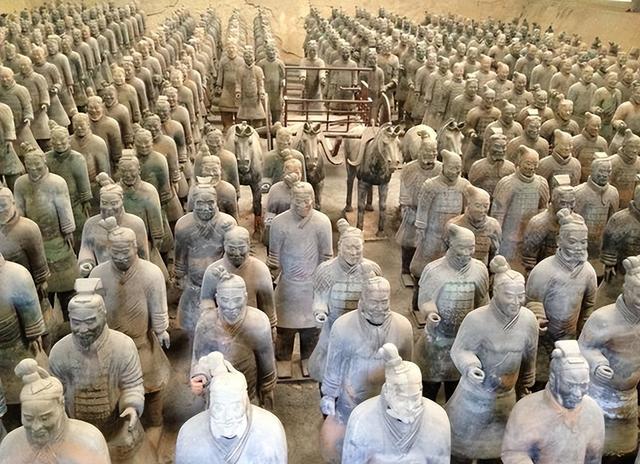
What is the Truth About the Terracotta Army?
The Terracotta Army is one of the most iconic archaeological discoveries of all time, captivating the world with its sheer scale and intricate detail. But what is the truth behind this army of clay soldiers? Let's delve into the fascinating facts and uncover the history buried within.
An Underground City of Soldiers
The soldiers are not simply standing in an open pit. They are meticulously arranged in trench-like, underground corridors that form a vast necropolis. These corridors, varying in width and depth, were dug and then lined with brick before the soldiers were placed inside. Imagine walking through these dimly lit passages, the silence broken only by your footsteps, surrounded by row upon row of these silent sentinels.
More Than Just Foot Soldiers
While the infantrymen are the most numerous, the Terracotta Army is not solely comprised of foot soldiers. Within some of the corridors, clay horses, equally life-sized and realistically rendered, are aligned four abreast. These powerful steeds, poised as if ready to charge into battle, add another layer of realism and grandeur to the army.
The Ghostly Chariots
Behind the ranks of horses, archaeologists discovered remnants of what were once wooden chariots. These chariots, likely intricately carved and painted, have long since decayed due to the passage of time and the environment within the tombs. However, their presence, even in a deteriorated state, speaks volumes about the emperor's desire to be fully equipped for the afterlife.
A Mausoleum Fit for an Emperor
The terra-cotta army, in all its splendor and vastness, is not a standalone entity. It is part of an elaborate mausoleum, a sprawling complex designed to accompany the first emperor of China, Qin Shi Huang, into the afterlife. This mausoleum, a testament to the emperor’s power and the skills of his artisans, is a microcosm of his empire, reflecting his belief in an elaborate and structured afterlife.
The Emperor's Eternal Guard
Archaeologists believe that the Terracotta Army, along with the entire mausoleum complex, served a symbolic purpose. They were placed there to protect and serve the emperor in his afterlife, just as an army would protect their ruler in the mortal realm. Each soldier, unique in his facial features and attire, represents the emperor's real army, showcasing the vastness of his power and his desire for eternal dominion.
Unveiling the Past, Piece by Piece
Though discovered in 1974, the Terracotta Army is still being excavated and studied. Each new discovery sheds further light on the reign of Qin Shi Huang, the beliefs surrounding death in ancient China, and the incredible craftsmanship of the era. This ongoing archaeological endeavor continues to amaze and intrigue, reminding us of the grandeur and mystery of the ancient world.
Q&A
Q: Where is the Terracotta Army located?
A: The Terracotta Army is located in Xi'an, Shaanxi province, China.
Q: How many soldiers are in the Terracotta Army?
A: It is estimated that there are over 8,000 life-sized terracotta soldiers in the army.
Q: Why was the Terracotta Army built?
A: The army was built to accompany the first emperor of China, Qin Shi Huang, into the afterlife and protect him in his eternal reign.